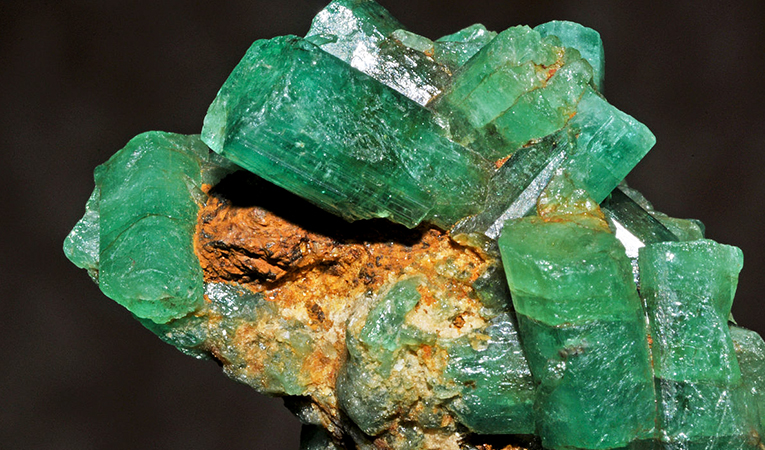Emerald
is a grass-green variety of beryl gemstone. It took its name indirectly from
the Greek Smaragdos. It is ranked third in importance between all the
gemstones. It is green because of small amounts of chromium or iron. Compared
with weight, it is considered the highest value among precious stones,
especially when it is interspersed with veins of other mineral salts. it’s
green color was thought to be a symbol of eternity.
Greek miners were working the mines in the time of Alexander the Great, and later the mines yielded their gems to Cleopatra. Remains of extensive workings were discovered about 1817 by French adventurer F. Cailliaud. Cleopatra Mines, also known as the ancient emerald mines or Mons Smaragdus (Emerald Mountains), is one of the oldest mining complexes of the ancient pharaonic world. It is located Wadi Sikait at a depth of 50 kilometers from the beginning of the valley of camels (Wadi el Jemal). Most historians think these mines were already in use during the Ptolemaic period ( 330-30BC ), some even arguing that the history of the mines may go back as far as the second millennium BC.
The ancient Pharaonic families, followed by the Romans, and the southern desert valleys of Aydab, exploited the ability to know that the valleys of the desert were precious metals, including gold and pyramidal emeralds. When the Pharaonic commercial convoys passed on the valley of Sikait. the Pharaohs discovered there, the precious emerald stone, and extracted the metal in large quantities.
Archaeologist Mohamed Abu El Wafa, director of the Red Sea Antiquities, said that the Romans used the Sikait Valley to extract the emerald stone after the pharaohs. They built a small temple in the middle of the mountain called the Roman temple of Serapis. It is said to be similar to the story of Isis and Osiris. Pharaohs. He said that he found buildings near the valley of Skate or Temple Sarabis buildings known as the city of Roman workers who were used by kings to extract the emerald stone.
While many of the employees in the tourism field in the Red Sea, starting from Bashar Abu Talib, the head of tourist guides association in the Red Sea, claims to put this area and the protector of Wadi Al-Jamal on the map of archaeological tourism, stressing that there are many who do not know anything about the Sikait Valley or the Roman temple of Serapis and the city workers Romanians.












 All
All
 Politics
Politics
 Economy
Economy
 Tourism
Tourism
 Nature
Nature
 Community
Community

